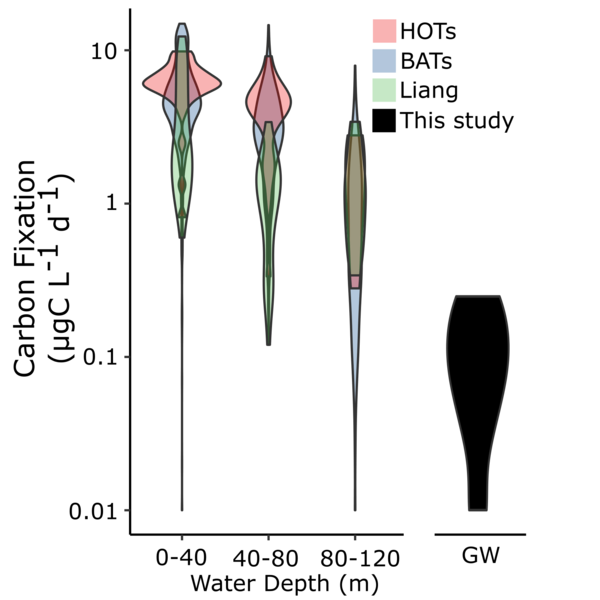Rates of primary production in groundwater rival those in oligotrophic marine system
2 Max Planck Institute for Biogeochemistry
3 University of Duisburg-Essen
V 15.8 in Grundwasserqualitätsentwicklung – Erkenntnisse aus Langzeitstudien in der Kritischen Zone
24.03.2022, 12:30-12:45, HS 2
The terrestrial subsurface contains nearly all of Earth's freshwater reserves and harbors upwards of 60% of our planet's total prokaryotic biomass [1-3]. While genetic surveys suggest these organisms rely on in situ carbon fixation, rather than the translocation of photosynthetically derived organic carbon [4-6] , corroborating measurements of carbon fixation in the subsurface are absent. Using a novel ultra-low level 14C-labeling technique, we show that in situ carbon fixation rates in a carbonate aquifer reached 10% of the median rates measured in oligotrophic marine surface waters, and were up to six-fold greater than those observed in lower euphotic zone waters where deep chlorophyll levels peak. Empirical carbon fixation rates were substantiated by both nitrification and anammox rate data. Metagenomic analyzes revealed a remarkable abundance of putative chemolithoautotrophic members of an uncharacterized order of Nitrospiria - the first representatives of this class expected to fix carbon via the Wood-Ljungdahl pathway. Based on these fixation rates, we extrapolate global primary production in carbonate groundwaters to be 0.11 Pg of carbon per year.

Groundwater vs marine carbon fixation rates
1. Gleeson, T., Befus, KM, Jasechko, S., Luijendijk, E. & Cardenas, MB The global volume and distribution of modern groundwater. Nat. Geosci. 9, 161-167 (2016).
2. Magnabosco, C. et al. The biomass and biodiversity of the continental subsurface. Nat. Geosci. 11, 707-717 (2018).
3. Flemming, H.-C. & Wuertz, S. Bacteria and archaea on Earth and their abundance in biofilms. Nat. Rev. Microbiol. 17: 247-260 (2019).
4. Probst, AJ et al. Differential depth distribution of microbial function and putative symbionts through sediment-hosted aquifers in the deep terrestrial subsurface. Nat Microbiol 3, 328-336 (2018).
5. Griebler, C. & Lueders, T. Microbial biodiversity in groundwater ecosystems. Freshw. Biol. 54: 649-677 (2009).
Export as iCal:

